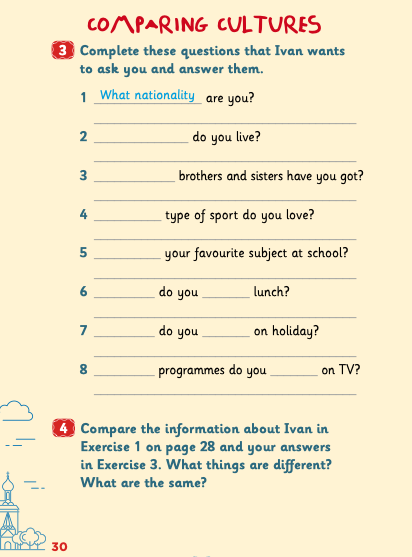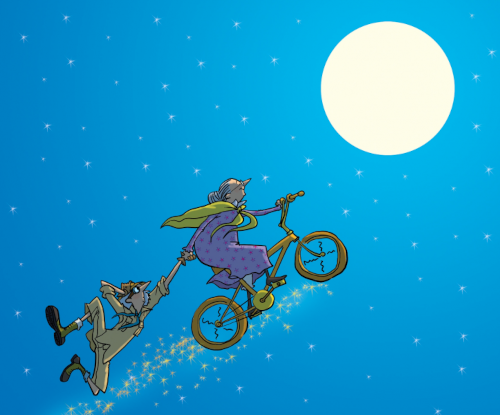Benefits of using stories in primary ELT
Most people like a good story, so reading stories in English can be very motivating for children learning English. Research has shown, and I think many teachers would agree, that learners who are extensive readers in the language they are studying become more fluent and advance more quickly in all areas (Donaghy, 2016). Added to this, reading stories can widen children’s horizons, as Dr. Seuss says, “The more you read the more you will know. The more you know the more places you will go”. Reading stories can also help children to become more autonomous English language learners.
Affordances of using graded readers
The complexity of the language used in graded readers is controlled but the length and detail of the story is often similar to an authentic book. Readers can be used inside and outside of English lessons (whether online or face-to-face) and can give children a real sense of achievement. Most of the major ELT publishers have collections of graded readers and some publishers like Eli Publishing, Black Cat – Cideb and Helbling Publishing specialize in readers. You can choose between retellings of classic tales, original stories and documentary type books which extend or reinforce children’s knowledge about the world.

When the children in a class are all using the same reader, teachers can enable them to develop reading sub skills as well as other important life skills and values – all in English! This very much depends on the types of activities used however, and in this blog post, I’m going to share some of those which I have found very motivating and effective. Most can be adapted for use during online lessons and are also suitable for asynchronous or flipped learning.
BEFORE READING
It is helpful to do some activities before children start the reader or before a new chapter. Sometimes the purpose is to awaken their interests and sometimes it is to support their understanding of key language so that they read more fluently without blocking at the lexical level.
Activities to arouse children’s interests
· What’s s/he like?: Show a picture of a character in the book and ask children to predict what s/he is like. Put the words they give you on a list on the wall (for lower levels you can put a list of adjectives for them to choose from). As they read and find out more about the character they can add to / cross off words from the list.
· Find out about the author and book: With simplified classics, children can do internet research about the author or the book before they start reading. For example, ask: When did the author live? Can you find a photo of her or him? What other books has s/he written? Has the story been made into a film? etc. You can also ask questions to find out their expectations based on their research. For example, Do you think it will be an adventure / sci-fi / funny story?
Vocabulary and grammar structure games
These activities could come before reading a story, after a section, or at the end of the book.
· Instructions to music: Ask children to dance only when they hear a word from a specific vocabulary set (for example animals, food etc.). Otherwise, they freeze as a statue. You can read a list of words or a short section from the book. If you prefer, instead of dancing they can put their hands on their heads, tap their noses and other affective non-verbal responses.
· Stand-up sit-down: This game encourages children to distinguish between two grammar forms. For example, ask children to stand when they hear a regular verb in the past (lived, worked watched etc.) and to sit down when they hear an irregular verb (see, write, read etc.). You can do this by first reading out a list of verbs where some are regular and some irregular and then by reading out a passage from the story. You could also use this game to distinguish other grammar forms, e.g., there’s vs there is, can vs can’t.
WHILE READING
· Prediction: Read a section of the story then stop for children to predict what happens next.
· TPR story: The children act out the story as you read. Depending on the story this can be in different groups for different characters.
· Reading together: You read the text of the story, and the children read the speech bubbles. Encourage them to be expressive and use appropriate intonation.
· What was that? Re-read a section of the story but purposely leave out information. For example, if a sentence says, The man saw a big black dog, you say “The man saw a dog.” The children say, “No! The man saw a big black dog.” Alternatively, you can make a mistake. For example, you say, “The man saw a big black cat.” The children say, “No! The man saw a big black dog!”
AFTER READING
As primary English teachers, we are concerned with developing not just children’s language skills but also their life-skills such as creative and critical thinking. We should include work on areas like citizenship, cultural awareness and tolerance which all lead into The United Nations Sustainable Development Goals for 2030 (i.e., Goal 5 gender equality; Goal 10 reduce inequality; and Goal 16 peace and justice). Graded readers can provide a great springboard for activities that work on these areas at the same time as developing listening, reading, speaking and writing sub skills.
Thinking skills
These activities encourage children to infer, interpret and evaluate as they engage with the text.
· Yes or no?: Give a list of things that can happen in a story, e.g., Someone gets lost. Someone helps another person. Someone has an accident. Someone meets someone new. Then ask, “Does this happen in the story?” The children answer yes or no. If children say “Yes”, you can ask them a follow up question, like, “When?”
· Fact or opinion?: Give children a list of sentences from or related to the book and ask them to divide them into facts and opinions,e.g., The jungle was full of tall trees with big leaves. The farmer is not a kind person.
· My point of view: Children write the story from the point of view of one of the characters, focusing on what the character feels.
· Let’s talk: Children invent dialogues between the characters, e.g., a phone conversation.
· Choose a friend: Ask children to say which of all the characters they would like as a friend. Ask them to write a dialogue with the character.
· Tableaux: The children take on different characters and stand in one of the scenes from the story. Ask each character to describe what they are doing and how they are feeling.
· Hot seat: One child pretends to be a character from the story and the rest of the group questions her/him about his actions and motives. To make this more real and engaging or to share the interview with another class, they can make it into a radio programme or video.
· Email to the author: Children write an email to the author saying what they like or dislike about the story or how they would change the ending and why.
· Musical representation: Play music to represent the characters or scenes from the story. The children say what the music represents and why they think this. They can bring in their own music for the rest of the class to guess which character or scene it represents and vote on the best.
· Design a billboard: Children imagine the book is made into a movie. Design a billboard advert with a picture, the title (this can be different from the title of the book), and a list of the main actors and actresses.
· Merchandising: Children design a T-shirt, backpack, pencil case, umbrella, etc. with a picture and a slogan related to the book.
Citizenship
These activities encourage children to develop attitudes and skills which make the community a better place to live.
· What’s your opinion? You can ask the children: Is there someone in the story who is greedy, a bully, a kind person? etc. Ask children to justify their opinions.
· Coffee talk: Children invent a dialogue in which a minor character in the story tells someone who doesn’t know the story what happens. You can teach expressions like NO! What happened next? What a good (bad, great, selfish, etc.) person!
· Change the gender: You can ask children to tell the story changing the gender of the characters. Then ask them, Is the story different now?
Cultural awareness and expression
These activities encourage children to use their interpersonal skills to increase their understanding and appreciation of cultural differences and similarities.
· Your country, my country: Ask children: Could this story happen in your country? Why or why not?
· Same and different: Ask children to find two or three things in the story which are the same as in their country. Then ask them to find two or three things which are different.

· Change the story: Ask children to rewrite the story using a setting and characters from their own country or a different country.
In summary
Although readers are readily available, they are often underused, and there is a tendency for teachers to rely on the activities at the back of the book. In reality, graded readers provide a wealth of possibilities. They expose children to language in context and, as has been explored here, they can be used to develop the four skills of reading, writing, listening and speaking … and much, much more.
Resources
You can find many more ideas to use with graded readers in these sources:
ELI Graded Readers Guide
http://www.eligradedreaders.com/guide/Guide_ENG.pdf
Reading Rockets. 103 things to do before, during or after reading
https://www.readingrockets.org/article/103-things-do-during-or-after-reading
State of Israel Ministry of Education Pedagogical Secretariat Language Department English Language Education. Reading for pleasure. A practical guide.
https://meyda.education.gov.il/files/Mazkirut_Pedagogit/English/readingforpleasure1.pdf
Reference
Donaghy, K. (2016). Seven Benefits of Extensive Reading for English Language Students. Available: https://kierandonaghy.com/seven-benefits-extensive-reading-english-language-students/



Thanks so much for this feedback, Sheila – I will pass it on to Jane as I’m sure she’ll appreciate it!
As always Jane hits every nail on the head. Excellent advice from one of the best writers of Readers for children on a global scale. Not only does she know how to tell a tale like no other, she is an excellent teacher and trainer. I agree readers are sadly undervalued and underused. I join her in a plea to resurrect them and use them more.